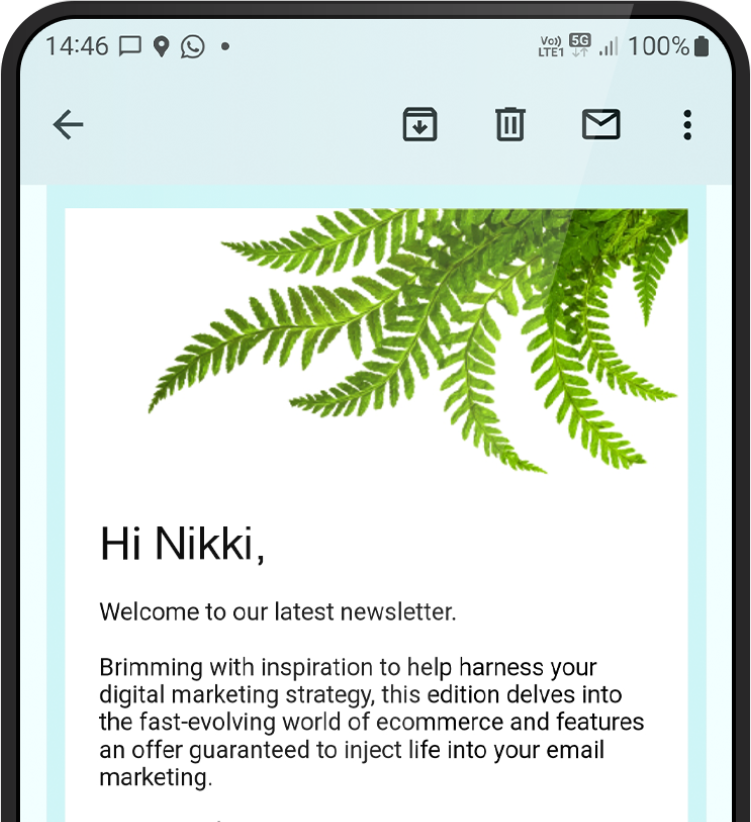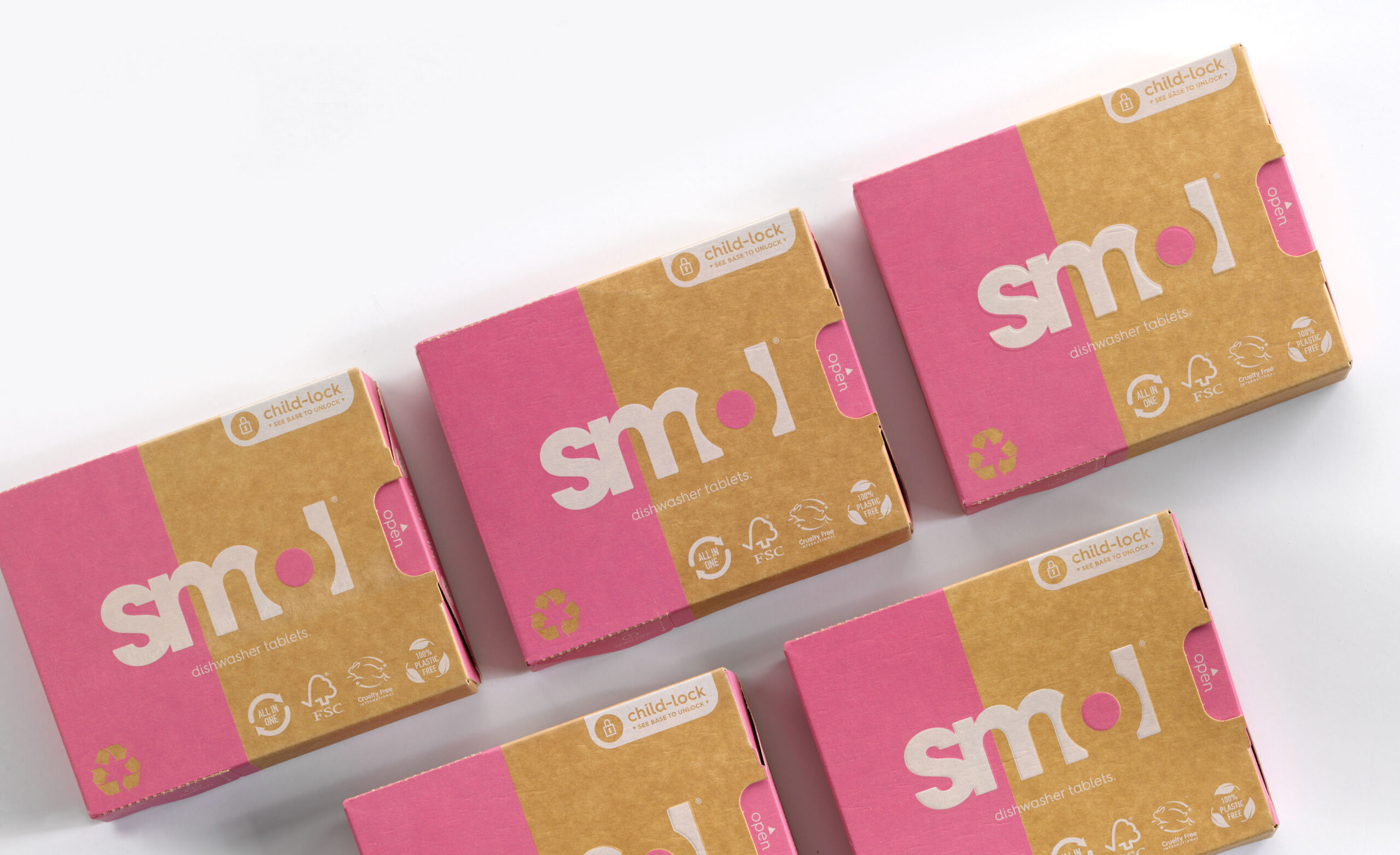
Creative insights for growing as a designer
By Megan Purves on 10 December 2024
Behind every great creative concept is a talented designer, bringing concepts to life through eye-catching visuals and purposeful design. We’re sitting down with our agency’s Mid-weight Designer, Charlotte, to discuss how her creative processes have developed over time.
Whether you’re an aspiring designer, new to the industry, or looking to elevate your craft, Charlotte will be sharing valuable insights and practical tips on how to thrive in the creative industry.
From mastering the tools of the trade to handling feedback with confidence, we’ll cover everything you need to know to build on your knowledge. Let’s explore the insights and strategies that have shaped Charlotte’s creative journey and discover her most valuable lessons for success:
What led you to pursue a career in graphic design?
Charlotte: I’ve always been interested in graphic design. Even when I was studying illustration, I was always looking for ways to work on my graphic design skills. I enjoyed giving context to my work by laying out magazine publications featuring my editorial illustrations. I also love printmaking techniques such as screen-printing and risograph – both of which lend themselves really well to graphic design.
From there, I continued to explore graphic design independently while teaching myself how to use Adobe programs. After graduating, I continued to pursue creative freelancing opportunities, which gave me early experience working with clients on both graphic design and illustration projects.

How do you approach developing a concept and refining it throughout the creative process?
Charlotte: My overall process hasn’t changed much since doing Art as a subject in school. It usually begins with an essential research stage, where I dedicate a lot of time to exploring a wide range of themes and influences. This stage supports building a strong concept or story behind my ideas, which in turn helps me to visualise them during the development stage. It doesn’t matter how cool a design looks; there are limitations to how far the final product can evolve without a solid story or concept at its core.
I also like to share ideas with colleagues to gain fresh perspectives at every stage of the creative process. When you’ve been immersed in your work by yourself for too long, it’s easy to overlook certain details. A second pair of eyes can be incredibly helpful for spotting things I may have missed and gathering suggestions for taking the idea further.
A strong creative process can help map out the most complex of projects, even when there are various considerations at play. DesignRush outline that in their article on industry trends.
Where do you seek inspiration when developing new design concepts?
Charlotte: Like most designers, I often start by looking at platforms such as Behance and Pinterest as a springboard for stylistic references. But when it comes to building a strong concept, I find it’s just as important to step away from the screen. Inspiration can come from anywhere in the real world – whether it’s found in a piece of art, a book, an Adshel at a bus stop or something completely unrelated. Taking in a variety of influences helps bring fresh, unique ideas to the creative process.

What’s the biggest lesson you’ve learned since becoming a professional designer?
Charlotte: One of the most important lessons I’ve learned is how to communicate effectively with different people. I’ve gained confidence in asking questions and building rapport, which has helped me adapt how I explain and present ideas. It’s crucial to strike a balance between sharing your vision with passion and ensuring everyone feels included.
For example, clients may not be familiar with industry jargon, so it’s important to sometimes simplify terms while still conveying the concept clearly. The same goes for pitching ideas – you want to make an impression and show confidence, but it should remain easy to understand and open to further discussion.
What design rules do you live by?
Charlotte: I try to keep accessibility at the forefront of everything I do. Even highly creative or avant-garde designs can still be accessible, and I believe that if a design isn’t accessible, then it isn’t truly successful. Of course, elements like contrast and readability are essential, but clarity in your messaging and setting the right tone for your target audience are just as important for ensuring effective communication.
While I haven’t perfected it, I constantly strive to create communications that are both visually striking and easy for everyone to engage with.
What technical skills are key for graphic designers to stay competitive in the industry?
Charlotte: The work you produce as a graphic designer is often translated into other specialisms such as motion graphics and UX/UI design, so having a grasp of the basic skills can be very useful. These skills help you understand and visualise how your designs can translate across different mediums, making your work more adaptable and versatile.
There’s often debate online about which skills come under the remit of a graphic designer. However, I believe that taking an interest in these technical areas and developing a broad understanding of them is crucial for staying effective and competitive in the industry today.

How do you handle creative feedback or revisions?
Charlotte: I do always prefer to discuss feedback directly with someone to fully understand their perspective. I find that having a conversation, usually over a call, can bring up additional points more naturally and allows for more back and forth, helping me get more out of the client.
I focus on asking questions in a way that isn’t defensive but rather encourages open dialogue. This helps me gather more information and get to the root of any issues or concerns so we can find a solution. Not everyone is comfortable expressing their thoughts in the same way, so it’s important to create a space where they feel comfortable sharing their feedback openly and honestly.
Are there any tools or resources you recommend for ongoing skills development?
Charlotte: For skills development, I regularly watch tutorials to learn new techniques and experiment with different tools and styles. At the moment, I’ve been developing my motion design skills by creating animations for our portfolio.
Within the job itself, there’s always something new to learn – whether it’s through ongoing projects or by reflecting on past work. I believe in continuously challenging myself and staying open to learning, as it’s essential for growth and expanding my skill set.

How do you stay on top of the latest design trends and industry changes?
Charlotte: While it’s important to stay aware of changes in the industry, I believe in designing for the long term. You can’t predict what’s going to happen, so I try to leave room for growth and adaptability in my designs. For example, with the rise of new social platforms or services like Google Docs and Slides, it’s important to remain open-minded and flexible to changes as they come.
At Firefly, we tend to avoid following trends too closely. We focus on creating designs that are made to last rather than chasing the latest style, which may quickly become outdated.
We hope Charlotte’s insights offer valuable guidance for elevating your design career. By embracing feedback and honing your skills, you can continue growing as a creative.
What’s one step you can take today to push your design journey forward? Whether it’s exploring new techniques, tackling a challenging project, or seeking fresh perspectives – growth starts with taking action.
Thank you
Success! We've received your message and will get back to you as soon as possible. We look forward to chatting to you.
“The friendly and professional Firefly team worked closely with us to develop and refine a clear style for our quarterly print and digital journals.
The team listened carefully to our needs and quickly responded to any queries and changes we requested. We are really happy with the end result, and with circulation increasing every month, it would seem our readers agree!
Sarah Brady
Brand Manager
Eyecare





